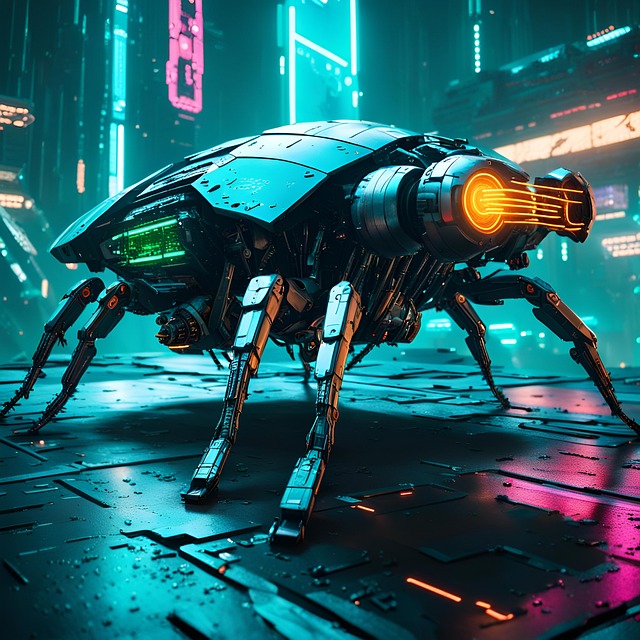# Unleashing AI Technology: The Transformative Power Behind Modern Solutions and Innovations
Artificial Intelligence (AI) has emerged as a cornerstone of modern technological advancements, reshaping industries and redefining the boundaries of what is possible. As we delve into the intricacies of AI technology, it becomes evident that its transformative power is not merely a trend but a fundamental shift in how we approach problem-solving and innovation. This article explores the multifaceted impact of AI across various sectors, highlighting its role in enhancing efficiency, fostering creativity, and driving economic growth.
## The Efficiency Revolution: Streamlining Processes
To begin with, AI technology is revolutionizing operational efficiency across numerous industries. By automating routine tasks, businesses can allocate their human resources toward more strategic initiatives. For instance, in manufacturing, AI-driven robotics facilitate real-time monitoring and predictive maintenance, significantly reducing downtime and operational costs. This level of automation not only enhances productivity but also minimizes human error, leading to higher quality outputs.
Moreover, the financial sector has witnessed a marked transformation due to AI’s capabilities. Algorithms that analyze vast datasets in real-time enable financial institutions to assess risks more accurately and make informed investment decisions. Machine learning models can detect fraudulent transactions with remarkable precision, ensuring the security of sensitive financial data. Consequently, the integration of AI in finance not only streamlines operations but also builds trust with customers through enhanced security measures.
In addition to these examples, the healthcare industry has also embraced AI to improve patient care and operational workflows. AI algorithms can analyze medical images, assisting radiologists in diagnosing conditions with unprecedented accuracy. Telemedicine platforms utilize AI to triage patients, ensuring that individuals receive timely care based on urgency. By optimizing these processes, healthcare providers can focus on delivering personalized care, ultimately enhancing patient outcomes.
## Fostering Creativity: AI as a Collaborative Partner
Beyond efficiency, AI technology is also fostering creativity and innovation. Contrary to the belief that AI may replace human creativity, it serves as a powerful collaborator, augmenting human capabilities. In the realm of art and design, AI tools can generate unique visual content, allowing artists to push the boundaries of their creativity. For instance, generative adversarial networks (GANs) can produce stunning artwork, enabling artists to explore new styles and concepts.
In the music industry, AI has begun to play an instrumental role in composition and production. Algorithms can analyze existing music trends and generate original compositions that resonate with contemporary audiences. This collaboration between human musicians and AI not only diversifies musical offerings but also democratizes the creation process, allowing aspiring artists to experiment with sophisticated tools previously reserved for industry veterans.
Furthermore, in the field of writing and content creation, AI applications like natural language processing (NLP) have transformed how we produce and consume information. AI writing assistants can help authors brainstorm ideas, refine their prose, and even generate entire articles based on specified parameters. This synergy between human creativity and AI technology empowers content creators to enhance their craft, ultimately leading to richer and more diverse narratives.
## Driving Economic Growth: AI as a Catalyst for Innovation
The economic implications of AI technology are profound, acting as a catalyst for innovation and growth across various sectors. As businesses harness AI capabilities, they can create new products and services that cater to evolving consumer needs. Startups leveraging AI are emerging at an unprecedented rate, driving competition and stimulating economic activity.
In the retail sector, AI has transformed the way businesses understand and engage with customers. Predictive analytics enable retailers to tailor their offerings based on consumer behavior, optimizing inventory management and enhancing customer experiences. This level of personalization not only boosts sales but also fosters brand loyalty, creating a win-win scenario for both businesses and consumers.
Moreover, AI’s impact extends to the agricultural sector, where precision farming techniques are revolutionizing food production. By utilizing AI-driven sensors and drones, farmers can monitor crop health, optimize resource usage, and increase yields. This innovative approach not only addresses food security challenges but also promotes sustainable farming practices, contributing to environmental conservation.
As nations invest in AI research and development, the potential for economic growth becomes increasingly evident. Governments worldwide recognize the importance of fostering AI talent and infrastructure, leading to the establishment of innovation hubs and research institutions. This commitment to AI development not only positions countries as leaders in the global market but also ensures that they remain competitive in an increasingly technology-driven economy.
## Conclusion: Embracing the Future of AI
In conclusion, the transformative power of AI technology is reshaping the landscape of modern solutions and innovations. By streamlining processes, fostering creativity, and driving economic growth, AI has cemented its role as a fundamental component of contemporary society. As we navigate this new era, it is imperative for businesses, governments, and individuals to embrace AI responsibly and ethically. The potential benefits are vast, but they come with the responsibility to ensure that AI serves humanity’s best interests. As we continue to unlock the possibilities of AI, the future holds immense promise for those willing to harness its power for the greater good.











